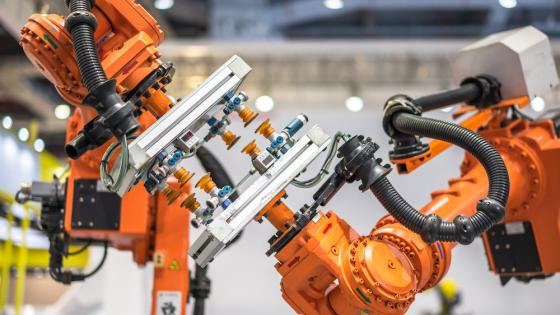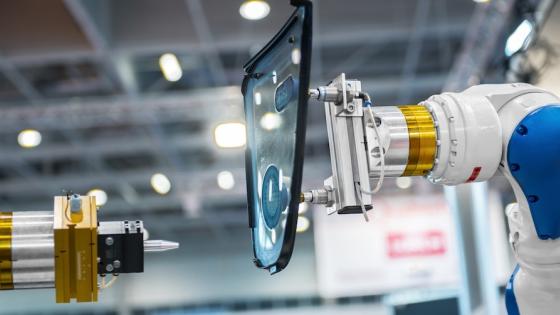Rapid advances across a number of technologies, including generative AI, cloud computing and robotics, have raised the hope that productivity growth in the US and other industrialised countries can accelerate. They have also intensified public worries about job displacement and inequality.
Naturally, the macroeconomic effects of any technology will depend on the degree of its adoption. Labour market impacts may additionally depend on whether advanced technologies are being used for automation, displacing workers from the tasks they used to perform, or for other purposes, such as increasing the productivity of workers in tasks they are already performing or creating new tasks for them.
Despite much enthusiasm about these new technologies, many commentators are concerned that their adoption has been slow and uneven. Lack of systematic data on adoption patterns and how new technologies are being used in workplaces has been a major roadblock on developing a holistic picture of whether and how these technologies will impact the economy.
A small literature has used various sources of data on adoption of robotics technology (e.g. Acemoglu et al. 2020, Bonfiglioli et al. 2020, Koch et al. 2021), there are some recent European technology surveys, such as those studied in Genz et al. (2021) for Germany and Calvino et al. (2022) for Italy. But data on cloud computing, AI and other software systems have been more scant, especially in the US.
In Acemoglu et al. (2022), we use data from the technology module in the 2019 Annual Business Survey (ABS), conducted by the US Census Bureau in partnership with the National Center for Science and Engineering Statistics, to shed new light on the spread of advanced technologies throughout the US economy and their implications. The 2019 ABS technology module collected data on the adoption or use of five classes of advanced technologies – robotics, dedicated equipment, specialized software systems, artificial intelligence, and cloud computing – between 2016 and 2018 across more than 300,000 firms.
A first notable pattern is that the adoption of these advanced technologies is indeed limited. Only 3.2% of firms in our sample used AI and 2% used robotics during 2016–2018. There is more, but still less than fully widespread, adoption of the other advanced technologies: 9.6% of firms used dedicated equipment, 40.2% made use of specialised software, and 34% used cloud computing between 2016 and 2018. About half of US firms in our sample did not use any of these technologies. This pattern supports the view that the spread of advanced technologies has been slow in the US.
A second empirical regularity adds complexity to this picture, however. Larger firms are much more likely to use advanced technologies. For example, firms with 250 or more employees are about eight times more likely to use robotics than firms with fewer than ten employees.
An important implication of this observation is that if we look at the data from the viewpoint of individuals rather than firms, a more significant fraction of US workers is exposed to these technologies (assuming all workers in a firm using a technology are exposed, directly or indirectly, to the effects of the technology). For example, 12.6% of US workers were employed at firms using AI in 2016–2018. The shares of employment at adopting firms are 15.7% for robotics, 36.4% for dedicated equipment, 64.4% for specialised software, and 61.8% for cloud computing. These high shares indicate that advanced technologies have been an important force affecting US labour and product markets, despite their limited adoption by small firms.
Our survey also sheds light on some of the factors slowing down the widespread adoption of these technologies. High costs of deploying and integrating these technologies and lack of applicability of these tools to firms’ business practices are among the chief reasons preventing their use. In addition, we find that older firms are significantly less likely to adopt advanced technologies, all else equal.
Thirdly, the ABS technology module is also unique in enabling researchers to develop a better understanding of why advanced technologies are being adopted. As with the limiting factors, there are many different motivations for adoption. Improving process quality, upgrading existing processes, and expanding product offerings are cited by many adopters. A major motivation for adoption across all technologies is automating production processes. We find that nearly 30% of AI users and 40% of robotics users report adopting at least one of these technologies for automation. Dedicated equipment and specialised software have more diverse uses, with about 20% of users adopting these technologies for automation.
Since adopters are larger, the fraction of US workers exposed to automation via advanced technologies is sizeable. For example, the share of firms adopting AI total employment is 55%, while the corresponding figure is even higher for firms using robots, at 65%. As a result, the fraction of the US workforce exposed to automation-related uses of advanced technologies is about 30.4%. Worker exposure to automation is particularly high in (though not exclusive to) manufacturing, where 52% of workers were employed at firms using these technologies for automation.
Even though AI and robotics are more closely related to automation, most of workers' exposure to automation comes from dedicated equipment and specialised software because these technologies are more widely adopted than AI and robotics.
Future waves of the ABS technology module will enable detailed longitudinal analysis of how adoption of advanced technologies impacts employment, wages, demand for skills, and productivity. However, even with the single year of responses, we can nevertheless get a glimpse of the relationship between advanced technologies and these important economic outcomes. Here, several interesting regularities are already apparent.
Productivity differences between adopters and non-adopters are sizeable. Although we caution in our companion paper that part of these differences is due to selection (Acemoglu et al. 2023a), they nevertheless suggest that advanced technologies may be an important contributor to productivity differences across firms. For example, with our estimates, robot adoption can account for up to 16–30% of the differences between the productivities of large and small firms within industries.
We also find that in line with the importance of automation as a major application of these technologies (and consistent with theories, such as Acemoglu and Restrepo 2018, emphasising the role of automation in the decline in the labour share), adopters have lower labour share (compared to other firms in their industry, size class, and cohort).
Theory further predicts that firms facing higher labour costs should be more likely to adopt advanced technologies for automation (e.g. Acemoglu and Restrepo, 2021). This is also the pattern the ABS survey reveals.
Finally, we use the ABS questions about the effects of technology adoption on the demand for workers and the demand for skills to shed light on the implications of these advanced technologies for workers. While most firms report that the adoption of advanced technologies does not change their employment level, between 20% and 40% of firms report that these technologies have raised their demand for skills. This pattern is also consistent with theoretical predictions. We note in this context that even if firms’ self-assessed reports of no major net impact on their employment is accurate, advanced technology adoption could have industry- or economy-wide effects on employment because it induces adopting firms to expand at the expense of their non-adopting competitors (as explored by Acemoglu et al. 2020 and Acemoglu et al. 2023b for industrial robots). Consequently, advanced technologies may generate job losses and reduced earnings for workers in other firms in the same industry, even when they do not adversely affect employees in adopting firms. Future waves of the ABS should enable us to explore these issues for the full suite of advanced technologies in the US context.
In sum, the ABS technology module provides a unique view of economy-wide adoption patterns for five important advanced technologies and reveals a number of new results that can be explored further in future work.
Authors’ note: Any opinions and conclusions expressed herein are those of the authors and do not represent the views of the U.S. Census Bureau.
References
Acemoglu, D, G Anderson, D Beede, C Buffington, E Childress, E Dinlersoz, L Foster, N Goldschlag, J Haltiwanger, Z Kroff, P Restrepo and N Zolas (2022), “Automation and the Workforce: A Firm-Level View from the 2019 Annual Business Survey”, forthcoming in NBER CRIW Conference Volume on Technology, Productivity, and Economic Growth.
Acemoglu, D, G Anderson, D Beede, C Buffington, E Childress, E Dinlersoz, L Foster, N Goldschlag, J Haltiwanger, Z Kroff, P Restrepo and N Zolas (2023), “Advanced Technology Adoption: Selection or Causal Effects?", AEA Papers and Proceedings 113: 210-14.
Acemoglu, D, H Koster and C Ozgen (2023), “Robots and Workers: Evidence from the Netherlands”, Working Paper, Massachusetts Institute of Technology.
Acemoglu, D and P Restrepo (2021), “Demographics and Automation”, Review of Economic Studies 89(1): 1-44.
Acemoglu, D, C Lelarge and P Restrepo (2020), “Competing with Robots: Firm-level Evidence from France”, AEA Papers and Proceedings 110: 383-88.
Bonfiglioli, A, R Crino, H Fadinger and G Gancia (2020), “Robot Imports and Firm-level Outcomes”, forthcoming in Economic Journal.
Calvino, F, S DeSantis, I Desnoyers-James, S Formai, I Goretti, S Lombardi, F Manaresi and B Perani (2022), “Closing the Italian Digital Gap: The Role of Skills, Intangibles and Policies,” OECD Science, Technology and Industrial Policy Paper No. 126.
Genz, S, T Gregory, F Lehmer, M Janser and B Matthes (2021), “How Do Workers Adjust When Firms Adopt New Technologies?”, IZA Discussion Paper No. 14626.
Koch, M, I Manuylo and M. Smolka (2021), “Robots and Firms”, Economic Journal 131(638): 2553–2584.













